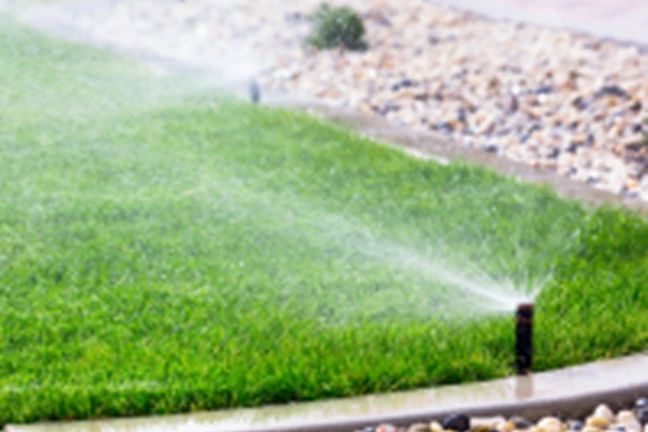Should I Scalp My Lawn in Summer?
Last Updated on June 15, 2025 by Duncan
Scalping the lawn is best done at the right time to ensure its effectiveness and avoid harming your grass.
If you have been asking yourself, should I scalp my lawn in summer? No, you should avoid it. The reason for this is that the summer heat is too severe, and scalping during this time can damage the grass.
The best time to scalp your lawn is early spring.
When deciding whether to scalp or not, you should consider the type of grass you have on your lawn. You should scalp Bermuda and Zoysia lawns in early spring before they emerge from winter dormancy.
This will remove dead grass, buildup, thatch, and debris, allowing the soil to warm up more quickly. Faster soil warming means that green, new vegetation will appear sooner.
Will grass grow back after scalping?
Accidents happen. If you’ve accidentally scalped your grass, you’re probably wondering what you can do (or if your lawn will recover). While the recuperation time for a scalped lawn varies depending on how short you cut it, there are several things you can do to speed it up. You can apply fertilizer, aerate and overseed, or simply get advice from a professional.
As mentioned, timing is critical while cutting your lawn. Warm-season grass roots begin to grow at about 60-65 degrees Fahrenheit. So, right before this moment, in early spring, is an excellent opportunity to scalp a dormant Zoysia or Bermuda grass. If you are scalping your lawn in preparation for winter, do so after the first frost.
When to avoid scalping your lawn
While lawn scalping can help lawns recover quickly in the spring, it is not always advisable. Scalping a lawn can cause the grass to weaken and become more vulnerable to stress, insects, and disease.
If you scalp a lawn at the wrong time or too forcefully, you risk causing soil erosion and weed development. And you don’t want this, do you?
If you’re thinking about scalping your grass in the spring, do your research and thoroughly prepare the area before you begin.
Why you should scalp your lawn
Grass scalping provides various advantages that can help improve the health and appearance of your grass. Here are some of the benefits of grass scalping.
Scalping a lawn eliminates dead grass blades and debris before the new grass comes in. This promotes a cleaner, healthier lawn that is free of dead or damaged grass.
Encourages Healthier Grass: Scalping your lawn is a natural technique to promote healthier grass without using chemicals. It allows more sunshine to enter the soil, resulting in faster greenup. It also improves seed-to-soil contact for new grass seed, which may help in grass growth.
Lawn scalping can help remove built-up thatch, which is a coating of dead grass and other organic material that forms on the soil’s surface. Thatch can block water and nutrients from reaching the roots of your grass, resulting in a weak and unhealthy lawn. Removing thatch can improve the look of your lawn and its health.
Lawn scalping can help prevent lawn diseases by removing dead grass and debris that may hold disease-causing organisms. It can also help your soil absorb more sunshine, which is suitable for lawn growth.
Scalping your grass can help prevent weeds from growing. By eliminating dead grass and trash, you eliminate possible places for weed growth. This will help keep your grass looking neat and tidy.
Overall, lawn scalping can be an effective way of keeping a healthy and attractive lawn. To avoid hurting your grass, scalp it at the appropriate time and with the proper technique.
How to tell your lawn needs scalping
Excessive thatch
If you observe a layer of thatch that is more than half an inch (1.3 cm) thick, it may indicate that your grass could benefit from scalping. Too much thatch can limit water and nutrient penetration, compromising the grass’s general health.
Uneven or patchy lawn
If your lawn has uneven growth or barren patches, scalping can help renew it by encouraging uniform growth and filling up any gaps.
Excessive weed growth.
If weeds have taken over your lawn, scalping can help get them out and give your grass a fresh start.
What do you need when lawn scalping?
To properly scalp your lawn, you will need the following equipment:
Lawn mower: Choose a mower with adjustable cutting deck settings and check that it is in good working order.
Rake: Use a robust rake to remove debris, loosen thatch, and prepare the lawn for scalping.
Lawn bags: You should bag the clippings generated by lawn scalping. Because the purpose of lawn scalping is to remove debris, avoid mulching it back into the lawn. If you opt to bag the clippings, ensure that you have enough lawn bags on hand.
Safety tips when scalping the lawn
Personal Protective Equipment: Wear proper safety equipment, such as gloves, safety glasses, and closed-toe shoes, to protect yourself from potential threats.
Check for impediments. Before mowing, check the lawn for any hidden hazards, such as rocks or tree roots, that could endanger you or harm the mower blades.
Follow the mower safety rules. Follow the manufacturer’s instructions and safety standards when operating your lawn mower model.
How to scalp your lawn
To effectively scalp your grass and achieve the desired results, follow these steps:
Prepare your lawn mower: Set your lawn mower’s cutting deck to the lowest setting, which is usually approximately 1 to 1.5 inches (2.5 to 3.8 cm). Make sure the mower blades are sharp to create clean cuts without hurting the grass.
Clear the lawn: Remove any debris, sticks, or large objects from the yard so that they do not interfere with the scalping process or damage the mower blades.
Mow the lawn: Begin mowing in a systematic pattern, preferably beginning at one end and working your way around the entire area. To cut the grass uniformly over the whole yard, keep the mower blades set to the lowest setting. You may need to make many passes to get the best results.
Bag or mulch clippings: Depending on your preferences and the condition of the lawn, you can either bag the clippings or mulch them back into the lawn. Bagging the clippings removes superfluous thatch and debris, whereas mulching returns nutrients to the soil. For optimal results, bag your clippings.
Clean up the lawn: After you are done with the scalping process, rake or blow away any remaining clippings or debris to ensure a neat appearance.
Conduct a soil test: Now is an excellent time to examine the quality of your soil, as the findings will provide helpful insight into the necessary amendments you need to undertake to improve grass quality. The ideal soil pH range for grass is neutral, between six and seven; thus, you will need to undertake pH modifications if it is higher or lower than that.
Mistakes to avoid when scalping the lawn
Scalping your lawn can be helpful when done right, but it can also be harmful if done incorrectly. Here are some common mistakes you should avoid:
Scalping too soon or too late: Timing is everything when it comes to scalping your grass.
Scalping too early in the season exposes plant sections to frost or extremely cold temperatures, whilst scalping too late might harm early growth. Scalping is best done between late February and mid-March, depending on your geographic location.
Cutting your grass too low can harm the blades and expose the soil, resulting in weed development and soil erosion. You should just cut one-third of the grass blade at a time.
Scalping your lawn too frequently might cause stress to the grass and delay development. You should scalp your lawn just once or twice a year, depending on the type of grass and the growing conditions.
Not prepping the lawn: Before scalping your lawn, make sure to remove any debris, mow it shorter than usual, and water it thoroughly. This will help protect the grass and promote healthy regeneration.
Using dull blades: Using dull blades causes the grass to rip rather than cut cleanly, resulting in uneven growth and illness. Sharpening your mower blades regularly is highly advised.
Ignoring the weather: Scalping your grass during severe weather conditions, such as drought or excessive rain, can be more damaging than beneficial. It is best to scalp your grass when the temperature is pleasant, and the soil is damp.
Avoiding these common blunders will ensure that your lawn remains healthy and lush after scalping.
Parting shot
Scalping a lawn can be an effective way to remove dead turf and encourage new growth in some grass species, such as Bermuda grass. However, before scalping a grass, evaluate the dangers and potential drawbacks.
Scalping too early in the season exposes the grass to frost or extremely low temperatures, which can harm the plant. Delaying the process until the grass is actively growing may cause stress and shock to the grass, reducing growth until it can recuperate.
While scalping can remove excess thatch and debris, it can also weaken the grass, making it more vulnerable to stress, disease, and weeds. As a result, before deciding whether or not to scalp your grass, evaluate the benefits and drawbacks and speak with a lawn care expert.
Finally, the decision to scalp a lawn should be based on the grass’s requirements and features, as well as the timing and procedures used. By taking a cautious and knowledgeable approach, you can be sure that the grass remains healthy and bright for years to come.


